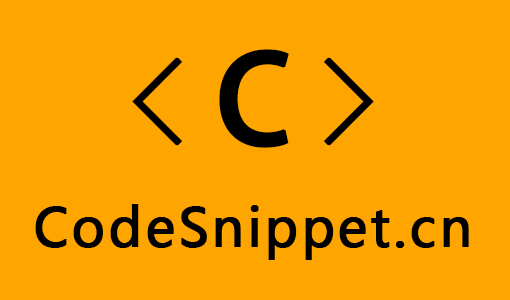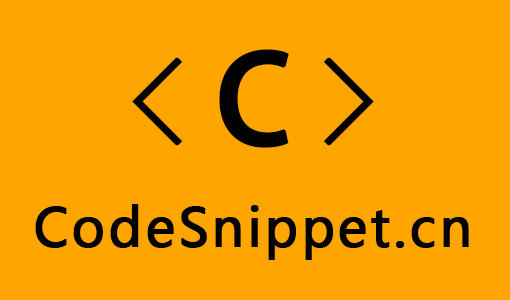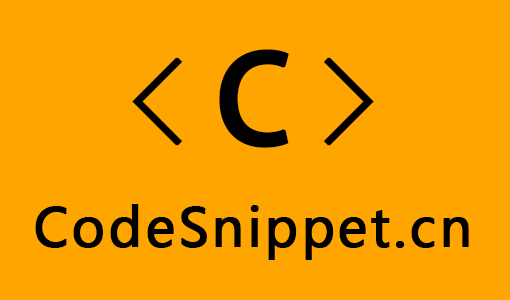CodeSnippet.Cn
代码片段
Csharp
架构设计
.NetCore
西班牙语
kubernetes
MySql
Redis
Algorithm
Other
Ubuntu
Linux
.NetMvc
VisualStudio
Python
Git
pm
WPF
java
Plug-In
分布式
CSS
微服务架构
JavaScript
DataStructure
Shared
理解ASP.NET Core - 路由(Routing)
0
.NetCore
小笨蛋
发布于:2022年10月16日
更新于:2022年10月16日
149
#custom-toc-container
### Routing - Routing(路由):更准确的应该叫做Endpoint Routing,负责将HTTP请求按照匹配规则选择对应的终结点 - Endpoint(终结点):负责当HTTP请求到达时,执行代码 路由是通过UseRouting和UseEndpoints两个中间件配合在一起来完成注册的: ```csharp public class Startup { public void ConfigureServices(IServiceCollection services) { // 添加Routing相关服务 // 注意,其已在 ConfigureWebDefaults 中添加,无需手动添加,此处仅为演示 services.AddRouting(); } public void Configure(IApplicationBuilder app, IWebHostEnvironment env) { app.UseRouting(); app.UseEndpoints(endpoints => { endpoints.MapGet("/", async context => { await context.Response.WriteAsync("Hello World!"); }); }); } } ``` - UseRouting:用于向中间件管道添加路由匹配中间件(EndpointRoutingMiddleware)。该中间件会检查应用中定义的终结点列表,然后通过匹配 URL 和 HTTP 方法来选择最佳的终结点。简单说,该中间件的作用是根据一定规则来选择出终结点 - UseEndpoints:用于向中间件管道添加终结点中间件(EndpointMiddleware)。可以向该中间件的终结点列表中添加终结点,并配置这些终结点要执行的委托,该中间件会负责运行由EndpointRoutingMiddleware中间件选择的终结点所关联的委托。简单说,该中间件用来执行所选择的终结点委托 > UseRouting与UseEndpoints必须同时使用,而且必须先调用UseRouting,再调用UseEndpoints ### Endpoints 先了解一下终结点的类结构: ```csharp public class Endpoint { public Endpoint(RequestDelegate requestDelegate, EndpointMetadataCollection? metadata, string? displayName); public string? DisplayName { get; } public EndpointMetadataCollection Metadata { get; } public RequestDelegate RequestDelegate { get; } public override string? ToString(); } ``` 终结点有以下特点: - 可执行:含有RequestDelegate委托 - 可扩展:含有Metadata元数据集合 - 可选择:可选的包含路由信息 - 可枚举:通过DI容器,查找EndpointDataSource来展示终结点集合。 #### 在中间件管道中获取路由选择的终结点 在中间件管道中,我们可以通过HttpContext来检索终结点等信息。需要注意的是,终结点对象在创建完毕后,是不可变的,无法修改。 - 在调用UseRouting之前,你可以注册一些用于修改路由操作的数据,比如UseRewriter、UseHttpMethodOverride、UsePathBase等。 - 在调用UseRouting和UseEndpoints之间,可以注册一些用于提前处理路由结果的中间件,如UseAuthentication、UseAuthorization、UseCors等。 我们一起看下面的代码: ```csharp public void Configure(IApplicationBuilder app, IWebHostEnvironment env) { app.Use(next => context => { // 在 UseRouting 调用前,始终为 null Console.WriteLine($"1. Endpoint: {context.GetEndpoint()?.DisplayName ?? "null"}"); return next(context); }); // EndpointRoutingMiddleware 调用 SetEndpoint 来设置终结点 app.UseRouting(); app.Use(next => context => { // 如果路由匹配到了终结点,那么此处就不为 null,否则,还是 null Console.WriteLine($"2. Endpoint: {context.GetEndpoint()?.DisplayName ?? "null"}"); return next(context); }); // EndpointMiddleware 通过 GetEndpoint 方法获取终结点, // 然后执行该终结点的 RequestDelegate 委托 app.UseEndpoints(endpoints => { endpoints.MapGet("/", context => { // 匹配到了终结点,肯定不是 null Console.WriteLine($"3. Endpoint: {context.GetEndpoint()?.DisplayName ?? "null"}"); return Task.CompletedTask; }).WithDisplayName("Custom Display Name"); // 自定义终结点名称 }); app.Use(next => context => { // 只有当路由没有匹配到终结点时,才会执行这里 Console.WriteLine($"4. Endpoint: {context.GetEndpoint()?.DisplayName ?? "null"}"); return next(context); }); } ``` 当访问/时,输出为: ```csharp 1. Endpoint: null 2. Endpoint: Custom Display Name 3. Endpoint: Custom Display Name ``` 当访问其他不匹配的URL时,输出为: ```csharp 1. Endpoint: null 2. Endpoint: null 4. Endpoint: null ``` 当路由匹配到了终结点时,EndpointMiddleware则是该路由的终端中间件;当未匹配到终结点时,会继续执行后面的中间件。 > 终端中间件:与普通中间件不同的是,该中间件执行后即返回,不会调用后面的中间件。 #### 配置终结点委托 可以通过以下方法将委托关联到终结点 - MapGet - MapPost - MapPut - MapDelete - MapHealthChecks - 其他类似“MapXXX”的方法 ```csharp public void Configure(IApplicationBuilder app, IWebHostEnvironment env) { app.UseRouting(); // 在执行终结点前进行授权 app.UseAuthorization(); app.UseEndpoints(endpoints => { endpoints.MapGet("/", async context => await context.Response.WriteAsync("get")); endpoints.MapPost("/", async context => await context.Response.WriteAsync("post")); endpoints.MapPut("/", async context => await context.Response.WriteAsync("put")); endpoints.MapDelete("/", async context => await context.Response.WriteAsync("delete")); endpoints.MapHealthChecks("/healthChecks"); endpoints.MapControllers(); }); } ``` ### 路由模板 规则: - 通过{}来绑定路由参数,如: {name} - 将?作为参数后缀,以指示该参数是可选的,如:{name?} - 通过=设置默认值,如:{name=jjj} 表示name的默认值是jjj - 通过:添加内联约束,如:{id:int},后面追加:可以添加多个内联约束,如:{id:int:min(1)} - 多个路由参数间必须通过文本或分隔符分隔,例如 {a}{b} 就不符合规则,可以修改为类似 {a}+-{b} 或 {a}/{b} 的形式 - 先举个例子,/book/{name}中的{name}为路由参数,book为非路由参数文本。非路由参数的文本和分隔符/: - 是不分区大小写的(官方中文文档翻译错了) - 要使用没有被Url编码的格式,如空格会被编码为 %20,不应使用 %20,而应使用空格 - 如果要匹配{或},则使用{{或}}进行转义 #### catch-all参数 路由模板中的星号*和双星号**被称为catch-all参数,该参数可以作为路由参数的前缀,如/Book/{*id}、/Book/{**id},可以匹配以/Book开头的任意Url,如/Book、/Book/、/Book/abc、/Book/abc/def等。 *和**在一般使用上没有什么区别,它们仅仅在使用LinkGenerator时会有不同,如id = abc/def,当使用/Book/{*id}模板时,会生成/Book/abc%2Fdef,当使用/Book/{**id}模板时,会生成/Book/abc/def。 #### 复杂段 复杂段通过非贪婪的方式从右到左进行匹配,例如[Route("/a{b}c{d}")]就是一个复杂段。实际上,它的确很复杂,只有了解它的工作方式,才能正确的使用它。 - 贪婪匹配(也称为“懒惰匹配”):匹配最大可能的字符串 - 非贪婪匹配:匹配最小可能的字符串 接下来,就拿模板[Route("/a{b}c{d}")]来举两个例子: 成功匹配的案例——当Url为/abcd时,匹配过程为(|用于辅助展示算法的解析方式): - 从右到左读取模板,找到的第一个文本为c。接着,读取Url/abcd,可解析为/ab|c|d - 此时,Url中右侧的所有内容d均与路由参数{d}匹配 - 然后,继续从右到左读取模板,找到的下一个文本为a。接着,从刚才停下的地方继续读取Url/ab|c|d,解析为/a|b|c|d - 此时,Url中右侧的值b与路由参数{b}匹配 - 最后,没有剩余的路由模板段或参数,也没有剩余的Url文本,因此匹配成功。 匹配失败的案例——当Url为/aabcd时,匹配过程为(|用于辅助展示算法的解析方式): - 从右到左读取模板,找到的第一个文本为c。接着,读取Url/aabcd,可解析为/aab|c|d - 此时,Url中右侧的所有内容d均与路由参数{d}匹配 - 然后,继续从右到左读取模板,找到的下一个文本为a。接着,从刚才停下的地方继续读取Url/aab|c|d,解析为/a|a|b|c|d - 此时,Url中右侧的值b与路由参数{b}匹配 - 最后,没有剩余的路由模板段或参数,但还有剩余的Url文本,因此匹配不成功。 > 使用复杂段,相比普通路由模板来说,会造成更加昂贵的性能影响 #### 路由约束 通过路由约束,可以在路由匹配过程中,检查URL是否是可接受的。另外,路由约束一般是用来消除路由歧义,而不是用来进行输入验证的。 实现上,当Http请求到达时,路由参数和该参数的约束名会传递给IInlineConstraintResolver服务,IInlineConstraintResolver服务会负责创建IRouteConstraint实例,以针对Url进行处理。 ##### 预定义的路由约束 | 约束 | 示例 | 匹配项示例 | 说明 | | ----------------- | -------------------------------------- | ------------------------------------ | ------------------------------------------------------- | | int | {id:int} | 123456789, -123456789 | 匹配任何整数 | | bool | {active:bool} | true, FALSE | 匹配 true 或 false。 不区分大小写 | | datetime | {dob:datetime} | 2016-12-31, 2016-12-31 7:32pm | 匹配固定区域中的有效 DateTime 值 | | decimal | {price:decimal | 49\.99, -1,000.01 | 匹配固定区域中的有效 decimal 值。 | | double | {weight:double} | 1\.234, -1,001.01e8 | 匹配固定区域中的有效 double 值。 | | float | {weight:float} | 1\.234, -1,001.01e8 | 匹配固定区域中的有效 float 值。 | | guid | {id:guid} | CD2C1638-1638-72D5-1638-DEADBEEF1638 | 匹配有效的 Guid 值 | | long | {ticks:long} | 123456789, -123456789 | 匹配有效的 long 值 | | minlength(value) | {username:minlength(4)} | Rick | 字符串必须至少为 4 个字符 | | maxlength(value) | {filename:maxlength(8)} | MyFile | 字符串不得超过 8 个字符 | | length(length) | {filename:length(12)} | somefile.txt | 字符串必须正好为 12 个字符 | | length(min,max) | {filename:length(8,16)} | somefile.txt | 字符串必须至少为 8 个字符,且不得超过 16 个字符 | | min(value) | {age:min(18)} | 19 | 整数值必须至少为 18 | | max(value) | {age:max(120)} | 91 | 整数值不得超过 120 | | range(min,max) | {age:range(18,120)} | 91 | 整数值必须至少为 18,且不得超过 120 | | alpha | {name:alpha} | Rick | 字符串必须由一个或多个字母字符组成,a-z,并区分大小写。 | | regex(expression) | {ssn:regex(^\d{{3}}-\d{{2}}-\d{{4}}$)} | 123-45-6789 | 字符串必须与正则表达式匹配 | | required | {name:required} | Rick | 用于强制在 URL 生成过程中存在非参数值 | ##### 正则表达式路由约束 通过regex(expression)来设置正则表达式约束,并且该正则表达式是: - RegexOptions.IgnoreCase:忽略大小写 - RegexOptions.Compiled:将该正则表达式编译为程序集。这会使得执行速度更快,但会拖慢启动时间。 - RegexOptions.CultureInvariant:忽略区域文化差异。 另外,还需要注意对某些字符进行转义: - \替换为\\ - {替换为{{, }替换为}} - [替换为[[,]替换为]] 例如: | 标准正则表达式 | 转义的正则表达式 | | ------------ | ------------ | | ^\d{3}-\d{2}-\d{4}$ |^\\d{{3}}-\\d{{2}}-\\d{{4}}$ | | ^[a-z]{2}$ |^[[a-z]]{{2}}$ | - 指定 regex 约束的两种方式: ```csharp // 内联方式 app.UseEndpoints(endpoints => { endpoints.MapGet("{message:regex(^\\d{{3}}-\\d{{2}}-\\d{{4}}$)}", context => { return context.Response.WriteAsync("inline-constraint match"); }); }); // 变量声明方式 app.UseEndpoints(endpoints => { endpoints.MapControllerRoute( name: "people", pattern: "People/{ssn}", constraints: new { ssn = "^\\d{3}-\\d{2}-\\d{4}$", }, defaults: new { controller = "People", action = "List", }); }); ``` > 不要书写过于复杂的正则表达式,否则,相比普通路由模板来说,会造成更加昂贵的性能影响 ###### 自定义路由约束 先说一句,自定义路由约束很少会用到,在你决定要自定义路由约束之前,先想想是否有其他更好的替代方案,如使用模型绑定。 通过实现IRouteConstraint接口来创建自定义路由约束,该接口仅有一个Match方法,用于验证路由参数是否满足约束,返回true表示满足约束,false则表示不满足约束。 以下示例要求路由参数中必须包含字符串“1”: ```csharp public class MyRouteConstraint : IRouteConstraint { public bool Match(HttpContext httpContext, IRouter route, string routeKey, RouteValueDictionary values, RouteDirection routeDirection) { if (values.TryGetValue(routeKey, out object value)) { var valueStr = Convert.ToString(value, CultureInfo.InvariantCulture); return valueStr?.Contains("1") ?? false; } return false; } } ``` 然后进行路由约束注册: ```csharp public void ConfigureServices(IServiceCollection services) { services.AddRouting(options => { // 添加自定义路由约束,约束 Key 为 my options.ConstraintMap["my"] = typeof(MyRouteConstraint); }); } ``` 最后你就可以类似如下进行使用了: ```csharp [HttpGet("{id:my}")] public string Get(string id) { return id; } ``` #### 路由模板优先级 考虑一下,有两个路由模板:/Book/List和/Book/{id},当url为/Book/List时,会选择哪个呢?从结果我们可以得知,是模板/Book/List。它是根据以下规则来确定的: - 越具体的模板优先级越高 - 包含更多匹配段的模板更具体 - 含有文本的段比参数段更具体 - 具有约束的参数段比没有约束的参数段更具体 - 复杂段和具有约束的段同样具体 - catch-all参数段是最不具体的 ### 核心源码解析 #### AddRouting ```csharp public static class RoutingServiceCollectionExtensions { public static IServiceCollection AddRouting(this IServiceCollection services) { // 内联约束解析器,负责创建 IRouteConstraint 实例 services.TryAddTransient<IInlineConstraintResolver, DefaultInlineConstraintResolver>(); // 对象池 services.TryAddTransient<ObjectPoolProvider, DefaultObjectPoolProvider>(); services.TryAddSingleton<ObjectPool<UriBuildingContext>>(s => { var provider = s.GetRequiredService<ObjectPoolProvider>(); return provider.Create<UriBuildingContext>(new UriBuilderContextPooledObjectPolicy()); }); services.TryAdd(ServiceDescriptor.Transient<TreeRouteBuilder>(s => { var loggerFactory = s.GetRequiredService<ILoggerFactory>(); var objectPool = s.GetRequiredService<ObjectPool<UriBuildingContext>>(); var constraintResolver = s.GetRequiredService<IInlineConstraintResolver>(); return new TreeRouteBuilder(loggerFactory, objectPool, constraintResolver); })); // 标记已将所有路由服务注册完毕 services.TryAddSingleton(typeof(RoutingMarkerService)); var dataSources = new ObservableCollection<EndpointDataSource>(); services.TryAddEnumerable(ServiceDescriptor.Transient<IConfigureOptions<RouteOptions>, ConfigureRouteOptions>( serviceProvider => new ConfigureRouteOptions(dataSources))); // EndpointDataSource,用于全局访问终结点列表 services.TryAddSingleton<EndpointDataSource>(s => { return new CompositeEndpointDataSource(dataSources); }); services.TryAddSingleton<ParameterPolicyFactory, DefaultParameterPolicyFactory>(); // MatcherFactory,用于根据 EndpointDataSource 创建 Matcher services.TryAddSingleton<MatcherFactory, DfaMatcherFactory>(); // DfaMatcherBuilder,用于创建 DfaMatcher 实例 services.TryAddTransient<DfaMatcherBuilder>(); services.TryAddSingleton<DfaGraphWriter>(); services.TryAddTransient<DataSourceDependentMatcher.Lifetime>(); services.TryAddSingleton<EndpointMetadataComparer>(services => { return new EndpointMetadataComparer(services); }); // LinkGenerator相关服务 services.TryAddSingleton<LinkGenerator, DefaultLinkGenerator>(); services.TryAddSingleton<IEndpointAddressScheme<string>, EndpointNameAddressScheme>(); services.TryAddSingleton<IEndpointAddressScheme<RouteValuesAddress>, RouteValuesAddressScheme>(); services.TryAddSingleton<LinkParser, DefaultLinkParser>(); // 终结点选择、匹配策略相关服务 services.TryAddSingleton<EndpointSelector, DefaultEndpointSelector>(); services.TryAddEnumerable(ServiceDescriptor.Singleton<MatcherPolicy, HttpMethodMatcherPolicy>()); services.TryAddEnumerable(ServiceDescriptor.Singleton<MatcherPolicy, HostMatcherPolicy>()); services.TryAddSingleton<TemplateBinderFactory, DefaultTemplateBinderFactory>(); services.TryAddSingleton<RoutePatternTransformer, DefaultRoutePatternTransformer>(); return services; } public static IServiceCollection AddRouting( this IServiceCollection services, Action<RouteOptions> configureOptions) { services.Configure(configureOptions); services.AddRouting(); return services; } } ``` #### UseRouting ```csharp public static class EndpointRoutingApplicationBuilderExtensions { private const string EndpointRouteBuilder = "__EndpointRouteBuilder"; public static IApplicationBuilder UseRouting(this IApplicationBuilder builder) { VerifyRoutingServicesAreRegistered(builder); var endpointRouteBuilder = new DefaultEndpointRouteBuilder(builder); // 将 endpointRouteBuilder 放入共享字典中 builder.Properties[EndpointRouteBuilder] = endpointRouteBuilder; // 将 endpointRouteBuilder 作为构造函数参数传入 EndpointRoutingMiddleware return builder.UseMiddleware<EndpointRoutingMiddleware>(endpointRouteBuilder); } private static void VerifyRoutingServicesAreRegistered(IApplicationBuilder app) { // 必须先执行了 AddRouting if (app.ApplicationServices.GetService(typeof(RoutingMarkerService)) == null) { throw new InvalidOperationException(Resources.FormatUnableToFindServices( nameof(IServiceCollection), nameof(RoutingServiceCollectionExtensions.AddRouting), "ConfigureServices(...)")); } } } ``` #### EndpointRoutingMiddleware 终于到了路由匹配的逻辑了,才是我们应该关注的,重点查看Invoke: ```csharp internal sealed class EndpointRoutingMiddleware { private const string DiagnosticsEndpointMatchedKey = "Microsoft.AspNetCore.Routing.EndpointMatched"; private readonly MatcherFactory _matcherFactory; private readonly ILogger _logger; private readonly EndpointDataSource _endpointDataSource; private readonly DiagnosticListener _diagnosticListener; private readonly RequestDelegate _next; private Task<Matcher>? _initializationTask; public EndpointRoutingMiddleware( MatcherFactory matcherFactory, ILogger<EndpointRoutingMiddleware> logger, IEndpointRouteBuilder endpointRouteBuilder, DiagnosticListener diagnosticListener, RequestDelegate next) { _matcherFactory = matcherFactory ?? throw new ArgumentNullException(nameof(matcherFactory)); _logger = logger ?? throw new ArgumentNullException(nameof(logger)); _diagnosticListener = diagnosticListener ?? throw new ArgumentNullException(nameof(diagnosticListener)); _next = next ?? throw new ArgumentNullException(nameof(next)); _endpointDataSource = new CompositeEndpointDataSource(endpointRouteBuilder.DataSources); } public Task Invoke(HttpContext httpContext) { // 已经选择了终结点,则跳过匹配 var endpoint = httpContext.GetEndpoint(); if (endpoint != null) { Log.MatchSkipped(_logger, endpoint); return _next(httpContext); } // 等待 _initializationTask 初始化完成,进行匹配,并流转到下一个中间件 var matcherTask = InitializeAsync(); if (!matcherTask.IsCompletedSuccessfully) { return AwaitMatcher(this, httpContext, matcherTask); } // _initializationTask在之前就已经初始化完成了,直接进行匹配任务,并流转到下一个中间件 var matchTask = matcherTask.Result.MatchAsync(httpContext); if (!matchTask.IsCompletedSuccessfully) { return AwaitMatch(this, httpContext, matchTask); } // 流转到下一个中间件 return SetRoutingAndContinue(httpContext); static async Task AwaitMatcher(EndpointRoutingMiddleware middleware, HttpContext httpContext, Task<Matcher> matcherTask) { var matcher = await matcherTask; // 路由匹配,选择终结点 await matcher.MatchAsync(httpContext); await middleware.SetRoutingAndContinue(httpContext); } static async Task AwaitMatch(EndpointRoutingMiddleware middleware, HttpContext httpContext, Task matchTask) { await matchTask; await middleware.SetRoutingAndContinue(httpContext); } } [MethodImpl(MethodImplOptions.AggressiveInlining)] private Task SetRoutingAndContinue(HttpContext httpContext) { // 终结点仍然为空,则匹配失败 var endpoint = httpContext.GetEndpoint(); if (endpoint == null) { Log.MatchFailure(_logger); } else { // 匹配成功则触发事件 if (_diagnosticListener.IsEnabled() && _diagnosticListener.IsEnabled(DiagnosticsEndpointMatchedKey)) { // httpContext对象包含了相关信息 _diagnosticListener.Write(DiagnosticsEndpointMatchedKey, httpContext); } Log.MatchSuccess(_logger, endpoint); } // 流转到下一个中间件 return _next(httpContext); } private Task<Matcher> InitializeAsync() { var initializationTask = _initializationTask; if (initializationTask != null) { return initializationTask; } // 此处我删减了部分线程竞争代码,因为这不是我们讨论的重点 // 此处主要目的是在该Middleware中,确保只初始化_initializationTask一次 var matcher = _matcherFactory.CreateMatcher(_endpointDataSource); using (ExecutionContext.SuppressFlow()) { _initializationTask = Task.FromResult(matcher); } } } ``` 上述代码的核心就是将_endpointDataSource传递给_matcherFactory,创建matcher,然后进行匹配matcher.MatchAsync(httpContext)。ASP.NET Core默认使用的 matcher 类型是DfaMatcher,DFA(Deterministic Finite Automaton)是一种被称为“确定有限状态自动机”的算法,可以从候选终结点列表中查找到匹配度最高的那个终结点。 #### UseEndpoints ```csharp public static class EndpointRoutingApplicationBuilderExtensions { public static IApplicationBuilder UseEndpoints(this IApplicationBuilder builder, Action<IEndpointRouteBuilder> configure) { VerifyRoutingServicesAreRegistered(builder); VerifyEndpointRoutingMiddlewareIsRegistered(builder, out var endpointRouteBuilder); configure(endpointRouteBuilder); var routeOptions = builder.ApplicationServices.GetRequiredService<IOptions<RouteOptions>>(); foreach (var dataSource in endpointRouteBuilder.DataSources) { routeOptions.Value.EndpointDataSources.Add(dataSource); } return builder.UseMiddleware<EndpointMiddleware>(); } private static void VerifyEndpointRoutingMiddlewareIsRegistered(IApplicationBuilder app, out DefaultEndpointRouteBuilder endpointRouteBuilder) { // 将 endpointRouteBuilder 从共享字典中取出来,如果没有,则说明之前没有调用 UseRouting if (!app.Properties.TryGetValue(EndpointRouteBuilder, out var obj)) { var message = $"{nameof(EndpointRoutingMiddleware)} matches endpoints setup by {nameof(EndpointMiddleware)} and so must be added to the request " + $"execution pipeline before {nameof(EndpointMiddleware)}. " + $"Please add {nameof(EndpointRoutingMiddleware)} by calling '{nameof(IApplicationBuilder)}.{nameof(UseRouting)}' inside the call " + $"to 'Configure(...)' in the application startup code."; throw new InvalidOperationException(message); } endpointRouteBuilder = (DefaultEndpointRouteBuilder)obj!; // UseRouting 和 UseEndpoints 必须添加到同一个 IApplicationBuilder 实例上 if (!object.ReferenceEquals(app, endpointRouteBuilder.ApplicationBuilder)) { var message = $"The {nameof(EndpointRoutingMiddleware)} and {nameof(EndpointMiddleware)} must be added to the same {nameof(IApplicationBuilder)} instance. " + $"To use Endpoint Routing with 'Map(...)', make sure to call '{nameof(IApplicationBuilder)}.{nameof(UseRouting)}' before " + $"'{nameof(IApplicationBuilder)}.{nameof(UseEndpoints)}' for each branch of the middleware pipeline."; throw new InvalidOperationException(message); } } } ``` #### EndpointMiddleware EndpointMiddleware中间件中包含了很多异常处理和日志记录代码,为了方便查看核心逻辑,我都删除并进行了简化: ```csharp internal sealed class EndpointMiddleware { internal const string AuthorizationMiddlewareInvokedKey = "__AuthorizationMiddlewareWithEndpointInvoked"; internal const string CorsMiddlewareInvokedKey = "__CorsMiddlewareWithEndpointInvoked"; private readonly ILogger _logger; private readonly RequestDelegate _next; private readonly RouteOptions _routeOptions; public EndpointMiddleware( ILogger<EndpointMiddleware> logger, RequestDelegate next, IOptions<RouteOptions> routeOptions) { _logger = logger ?? throw new ArgumentNullException(nameof(logger)); _next = next ?? throw new ArgumentNullException(nameof(next)); _routeOptions = routeOptions?.Value ?? throw new ArgumentNullException(nameof(routeOptions)); } public Task Invoke(HttpContext httpContext) { var endpoint = httpContext.GetEndpoint(); if (endpoint?.RequestDelegate != null) { // 执行该终结点的委托,并且视该中间件为终端中间件 var requestTask = endpoint.RequestDelegate(httpContext); if (!requestTask.IsCompletedSuccessfully) { return requestTask; } return Task.CompletedTask; } // 若没有终结点,则继续执行下一个中间件 return _next(httpContext); } } ``` ### 总结 说了那么多,最后给大家总结了三张UML类图: RoutePattern [](https://www.codesnippet.cn) EndPoint [](https://www.codesnippet.cn) Matcher [](https://www.codesnippet.cn) 另外,本文仅仅提到了路由的基本使用方式和原理,如果你想要进行更加深入透彻的了解,推荐阅读蒋金楠老师的ASP.NET Core 3框架揭秘的路由部分。
这里⇓感觉得写点什么,要不显得有点空,但还没想好写什么...
返回顶部
About
京ICP备13038605号
© 代码片段 2025